PICTURE OF DECAY
Once vibrant Joburg Art Gallery is crumbling into ruin
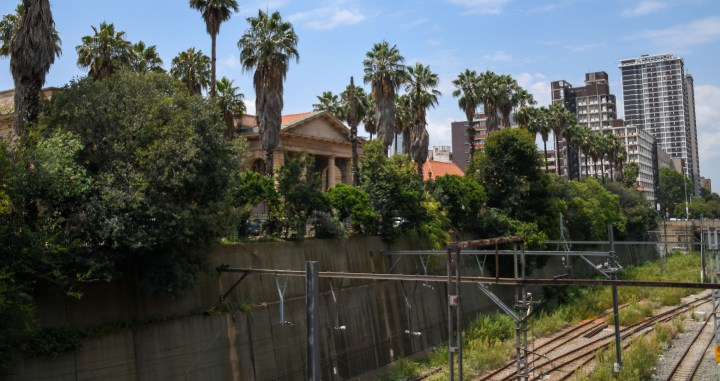
‘It was like walking into a graveyard. Something which had once been gleaming and energised, into something which has collapsed to ruin,’ said Christopher Till, director of the Johannesburg Art Gallery in its heyday (from 1984-1992).
A month ago, Christopher Till visited the Johannesburg Art Gallery (JAG) after a colleague told him to check out how the gallery — thought to house the biggest art collection on the continent — had deteriorated.
Till was the director of the JAG from 1984 to 1992.
“I was devastated. I mean, it’s the same sort of feeling when you see the tragedy of wonderful buildings being blown up in Ukraine.”
Till said there was one guard at the door, and some of the galleries were closed off, while the ones that were open didn’t have lights on.
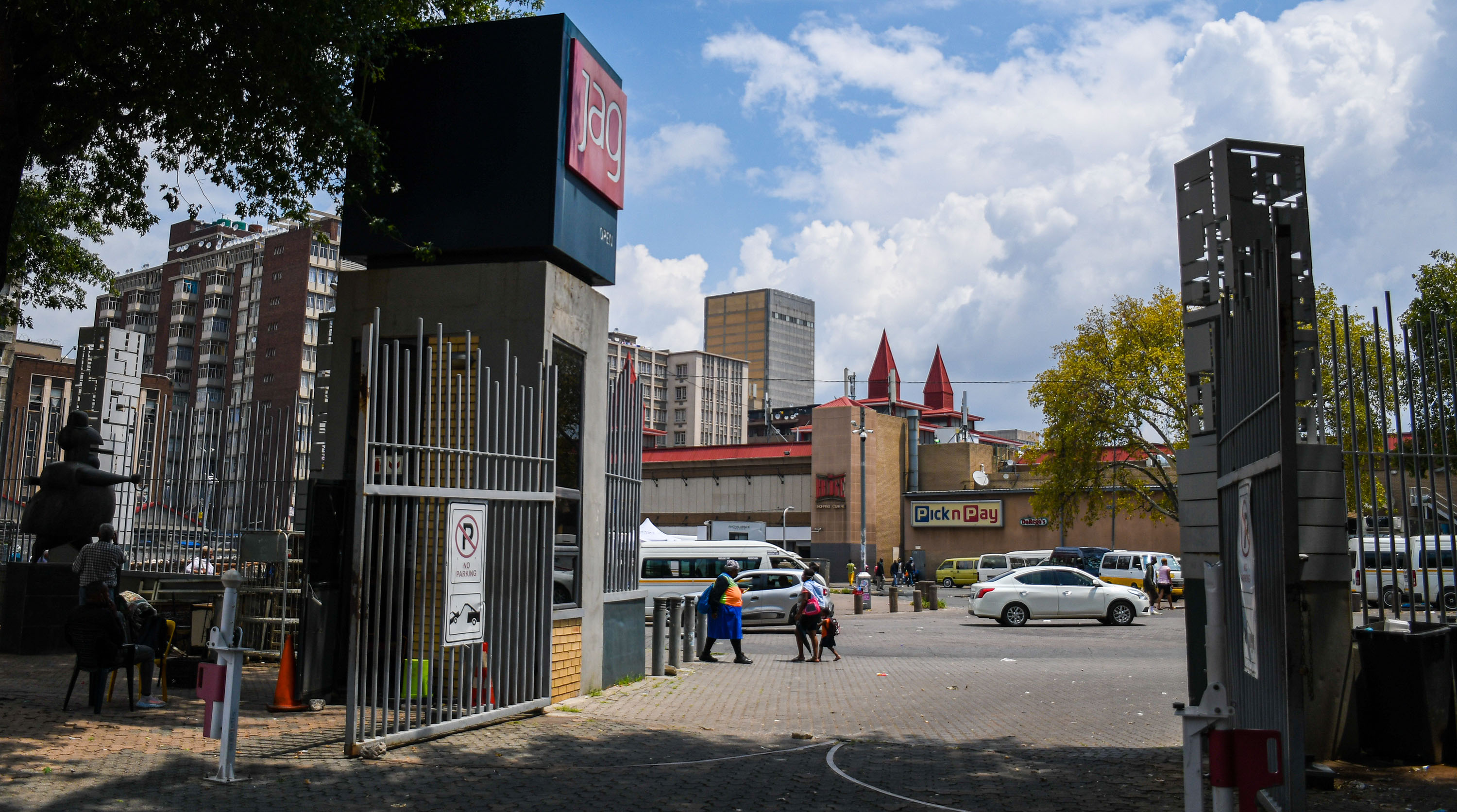
The entrance of the Johannesburg Art Gallery, with Hillbrow residents walking outside. (Photo: Julia Evans)
“I know the building, so I was able to have a look around. And what I saw was an absolute travesty,” said Till, describing how the west pavilion, which was closed off, had water pouring down the walls from the rain outside and was filled with old furniture and dilapidated, empty showcases.
“The entire ‘new’ gallery underground was sealed off and completely empty, with the screen walls lying around stacked on the floor and [they] were extensively water-damaged,” said Till.
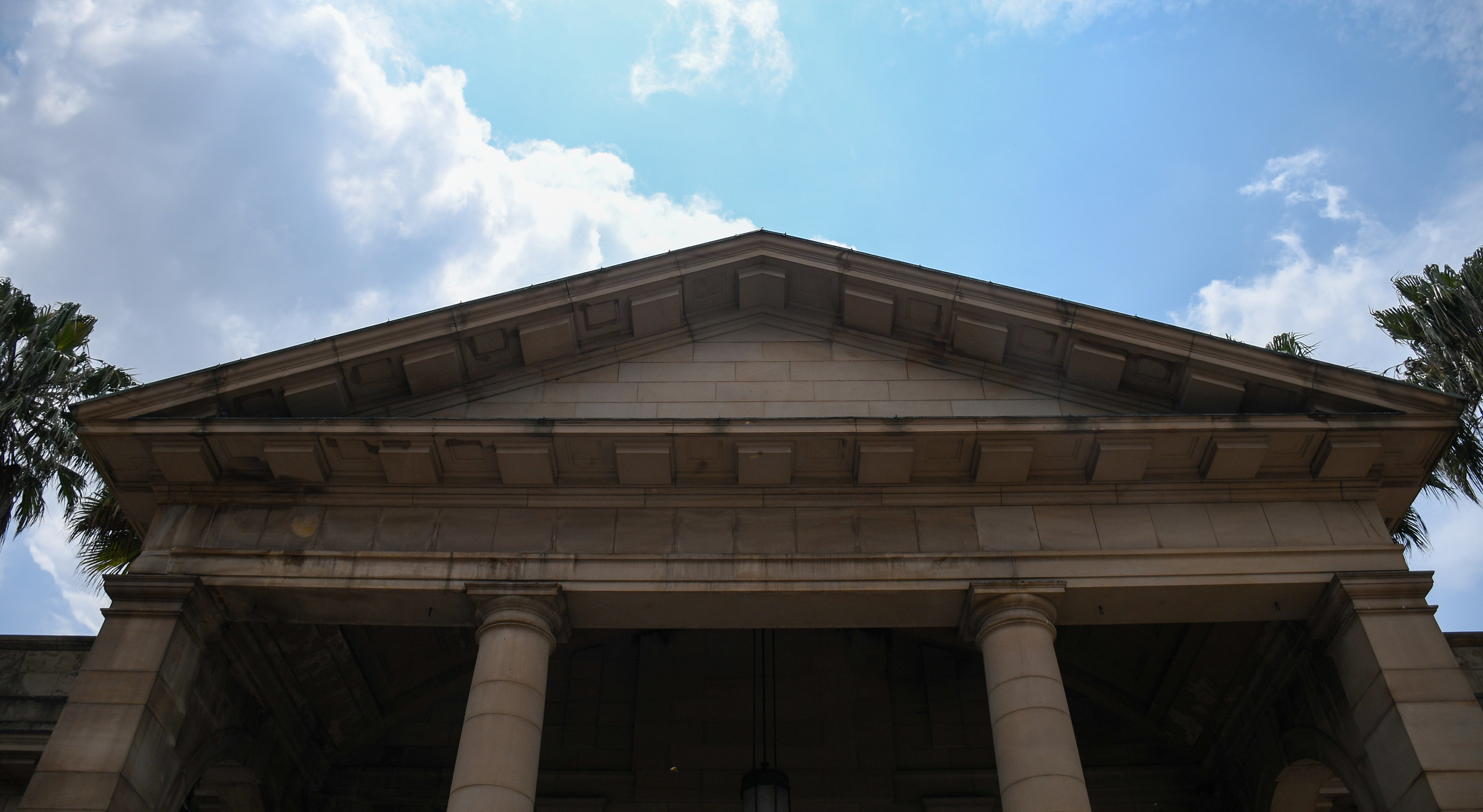
The Lutyens Building – where part of the Johannesburg Art Gallery resides – was built in 1915. Photo: Julia Evans
The JAG is partly housed in the Lutyens Building, one of the oldest buildings within the South African art establishment, built in 1915 in Joburg’s inner city near Joubert Park.
Once “gleaming”, the JAG is beginning to reflect the decay of the surrounding area.
An empty parking lot greets visitors and at first glance, all seems in order in the gallery.
But visit on a rainy day and the disrepair becomes apparent.
Several leaks and cracks are visible in the Phillips Gallery. Lights do not work, windows are grubby and pigeon droppings are splattered on outdoor sculptures.
“This, sadly, is where many of our public museums in South Africa are presently being compromised, with the collections inside of them being imperilled,” said a former curator of historical art collections at Iziko Museums of South Africa, who wishes to remain anonymous.
“Leaking roofs, ageing wiring and lighting systems and other lapses put our valuable collections at risk from damage caused by damp and fire.”
Till said the experience of the gallery was completely different when he was its director.
“When I came down and took over we turned the Johannesburg Art Gallery into the epicentre of the art world in Johannesburg by a long way. It was vibrant, it was alive.”
Till said then they had 30,000 visitors a year.

A window in the courtyard of the Johannesburg Art Gallery covered in pigeon droppings.Photo:Julia Evans
What’s at stake
Works from European masters like Pablo Picasso, Francis Bacon, Pierre-Auguste Renoir and Rembrandt, to name a few, are in the gallery — although you won’t see them. They are stored in the basement, with about 90% of some 10,000 works under the gallery’s care.
In terms of African works, Emeritus Professor at the Wits School of Art and Wits Art Museum, Anitra Nettleton, who is an expert in African art, told Daily Maverick: “There is a large collection of late 19th and 20th century works by South African artists — although it was only in the very late ’80s that black artists’ works were acquired.”
Such traditional African art from southern Africa includes the Jacques Collection of headrests, the loan of the Brenthurst Collection of Southern African Art (from the Oppenheimer family), and the Horstmann Collection.
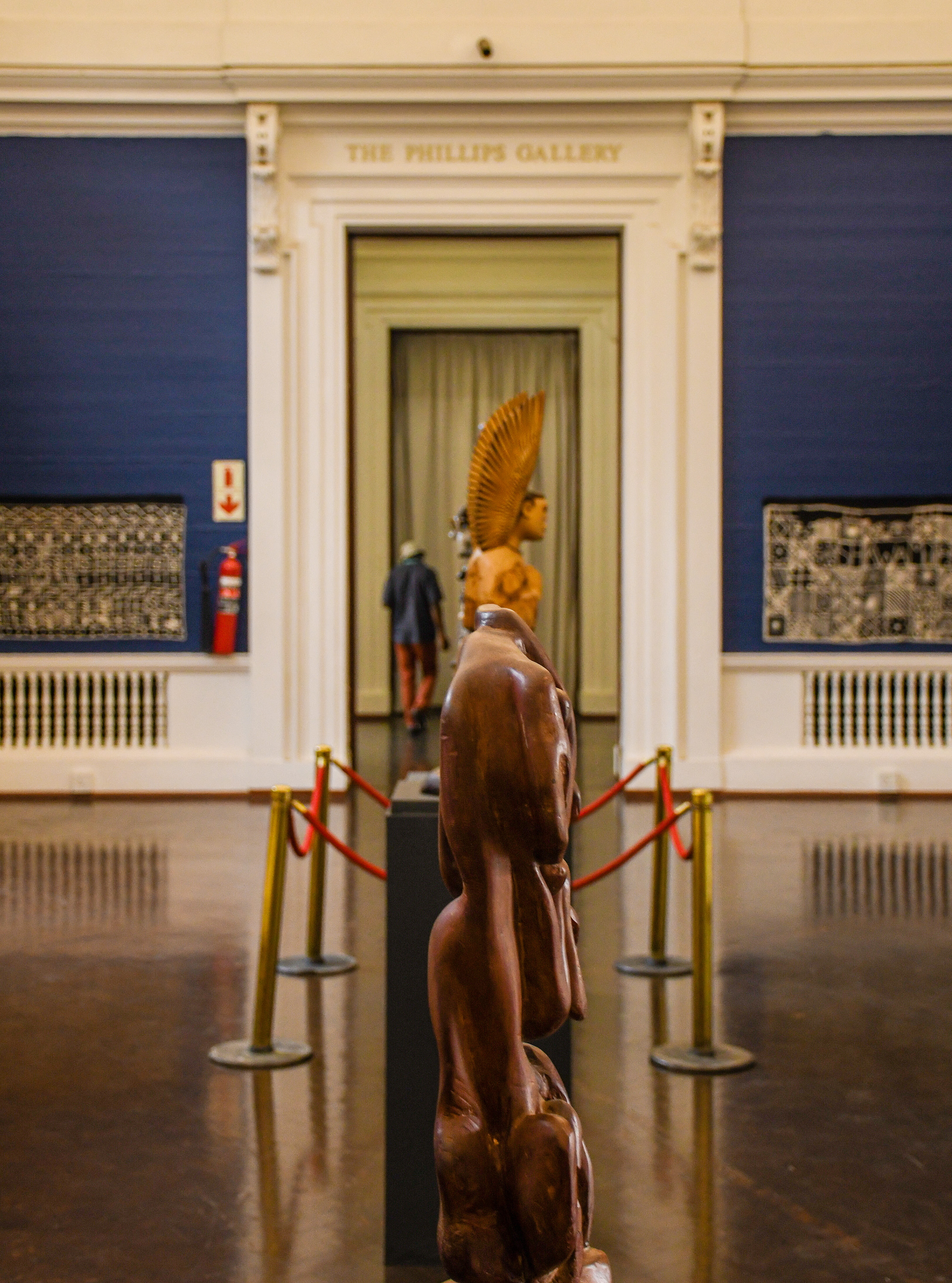
The Phillips Gallery is the first gallery at the Johannesburg Art Gallery, which is estimated to have a collection in the millions of rands. Photo: Julia Evans
Nettleton said it was difficult to put a monetary value on the collection, although the Brenthurst Collection alone could be worth several million rands, and in monetary terms is irreplaceable.
“But the value of this collection to Johannesburg and Gauteng goes much further,” said Nettleton.
“It is part of a colonial history and a story of the emergence from colonial shadows into a different cultural and — we hoped at one stage — more enlightened social and political matrix.
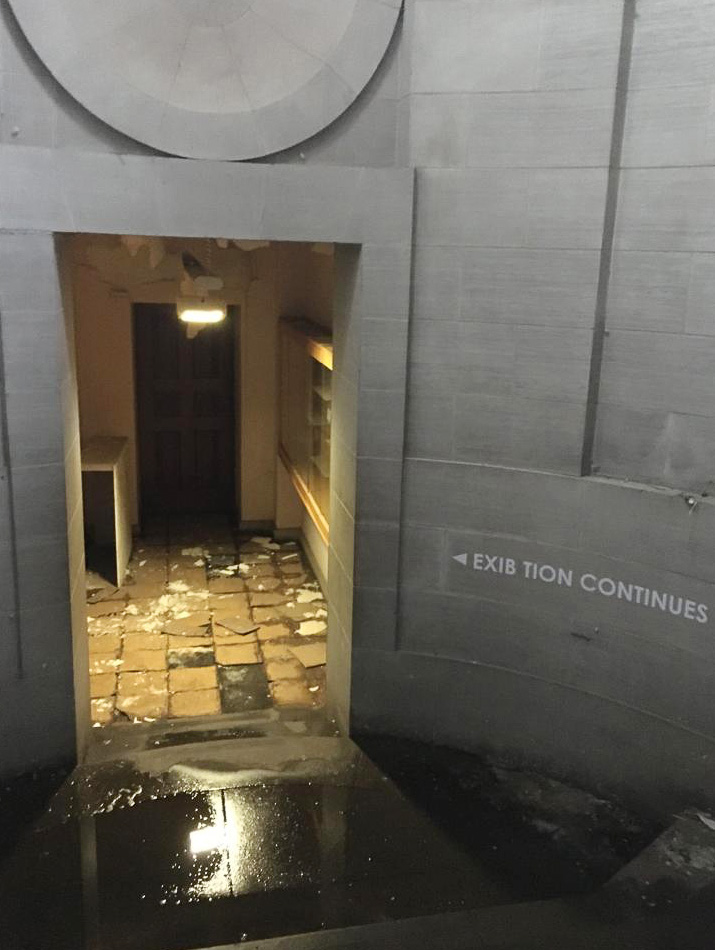
State of the lower level of the Johannesburg Art Gallery sent in by an anonymous and concerned Daily Maverick reader.Photo:Supplied
“I think because the institution is still perceived by many as a colonial imposition, its value to our heritage is lost.”
With the current state of the gallery, water dripping in, a lack of security and temperature control, this valuable and culturally significant art is at risk.
“Water in contact with any artwork is invariably destructive to it… Most of the materials used by artists, such as canvas, wood and paper are hygroscopic [absorb water from the atmosphere],” said the former curator at Iziko Museums of South Africa.
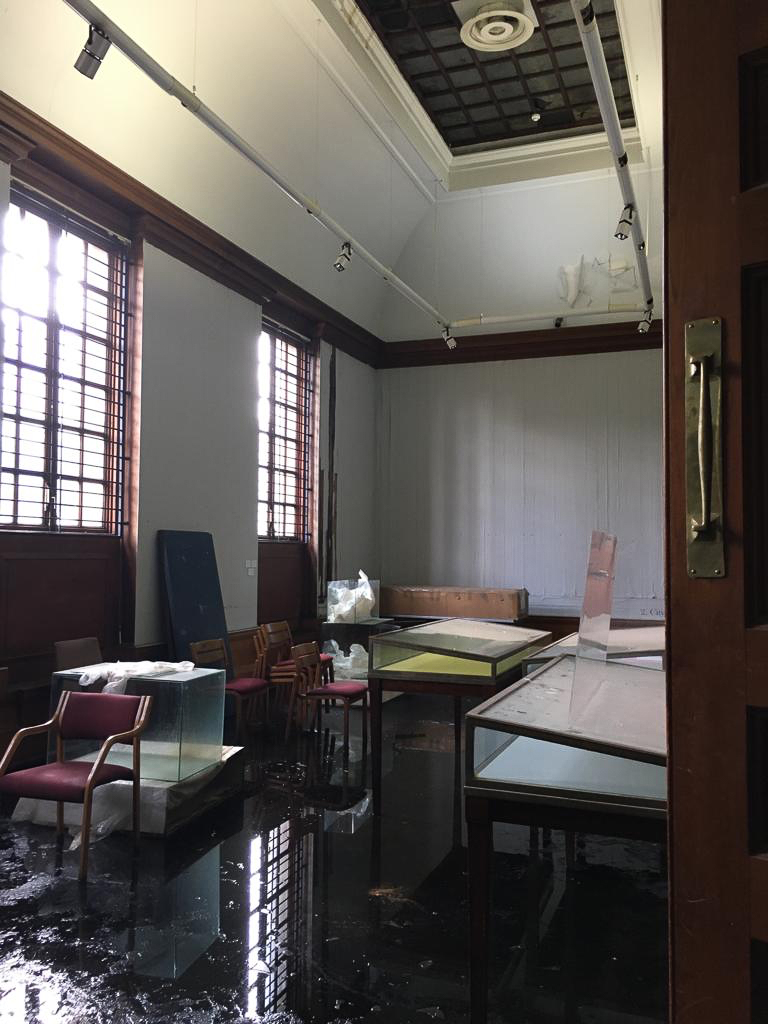
One of the closed-off rooms that have water leaking into it, was sent by an anonymous and concerned Daily Maverick reader. Photo: Supplied
Excess humidity can cause materials to expand. Paper discolours and crinkles, wood warps and canvases detach from their grounds. Gilded ornaments on old picture frames can also become detached. There is a risk of mould forming on painted surfaces and the backs of paintings, especially on works stored in the dark.
How did we get here?
The JAG belongs to the City of Johannesburg. The city provides its budget, pays staff salaries and is supposed to oversee the maintenance of the structure.
Steven Sack, who was Director of Arts, Culture and Heritage for the City of Johannesburg from 2004 to 2011, told Daily Maverick that the city manages a portfolio of museums (including the Hector Pieterson Museum, Museum Africa and the James Hall Museum of Transport), which are poorly resourced.
“They all have a lot of staff vacancies and they all have ageing infrastructure that is not properly cared for. They all have collections that are deteriorating and are at risk,” said Sack. He wrote a report about this 10 years ago and says since then very little has been done to address these problems.
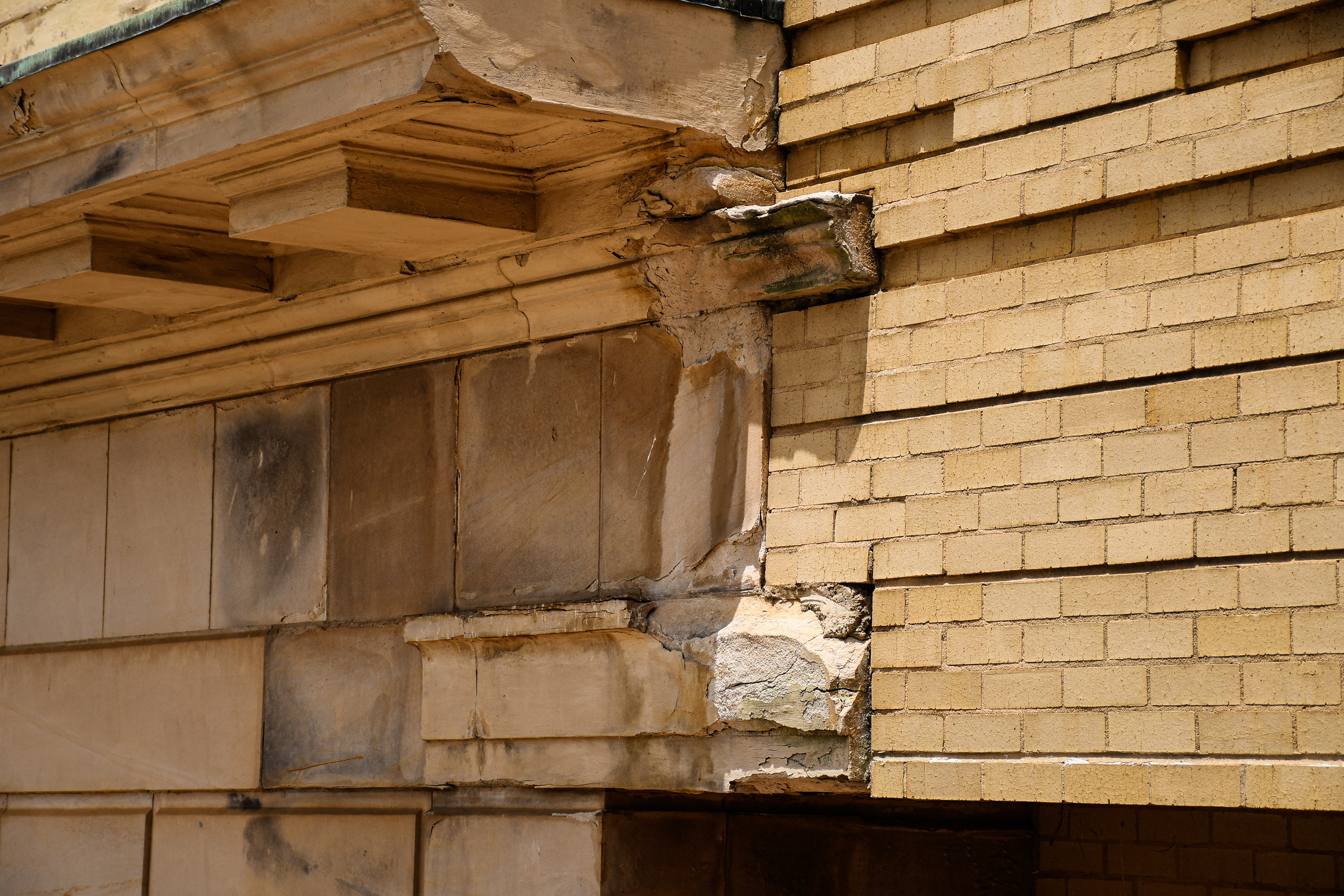
The division between the old and new sections of the Johannesburg Art Gallery. The new section was finished in 1986 and had structural faults that led to chronic leakages. (Photo: Julia Evans)
“The reason is because Arts and Culture is such a small portfolio — it’s very hard to get its voice heard within the city system. If you think about the city as well, the city is primarily responsible for the functioning of the city, water, lights, roads.”
Museums in the city have never been a priority, but even with the budget it did have, the repairs at the JAG have faced issues.
According to Till — who was the director at the time — and Sack, when a new wing was built in 1986 it had chronic leak issues because of the way it had been constructed.
“They cast water pipes into the concrete and they’d crack,” said Sack, “and so it was a disaster from the very first rains.”
Till said the leak manifests itself between the old existing building and the new building.
“It’s criminal that the galleries got into the state that they’re in,” said heritage architect Brian McKechnie. “If they [the City of Joburg] had just done continual maintenance on the building and then had a proper maintenance budget, we wouldn’t be sitting where we are now.”
Sack explained that, as with all departments in the city, the buildings belong to the city but are managed by the Johannesburg Development Agency (JDA) and Johannesburg Property Company — implementing arms of the city.
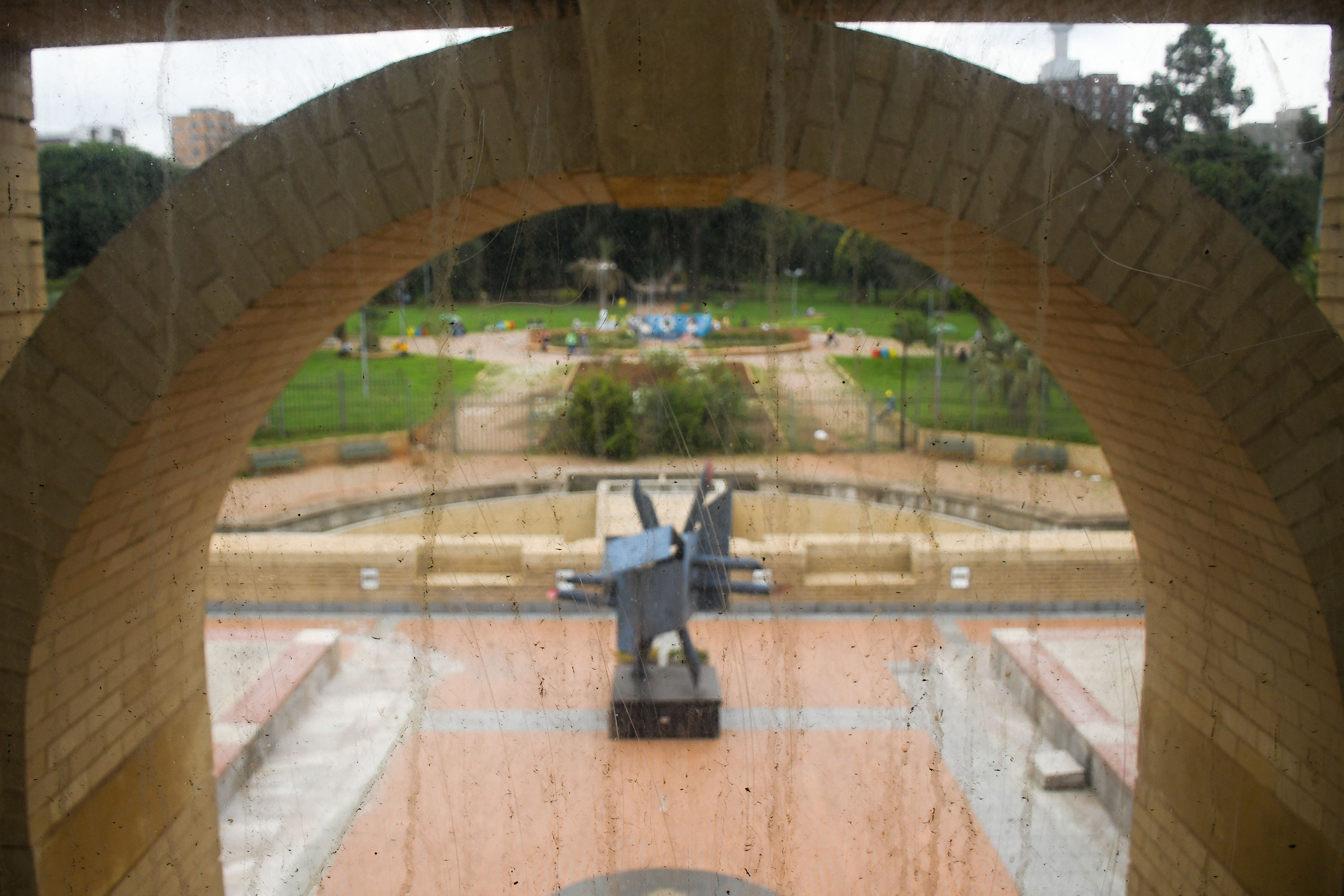
A dirty window on the second floor of the Johannesburg Art Gallery looking out onto Joubert Park in Central Johannesburg.Photo:Julia Evans
The JDA has a roster of contractors, and according to Sack, hired contractors with no experience in managing heritage buildings, who worked on the building from about 2018 to 2021.
“They did more damage — when they had finished, the building leaked more than when they started,” said Sack.
City of Joburg spokesperson Nthatisi Modingoane told Daily Maverick, “There are a number of things that have impacted on our ability to maintain the building in an optimal condition, including a long history of misdiagnosis of the infrastructural and design problems that have gotten progressively worse over the years, and not through lack of trying.
“For the greater part of the second half of 2021, a team of structural engineers that was commissioned by the Community Development Department via the JDA has conducted a thorough assessment of the entire building, not just the parts that have drawn public attention.
“From the report, we are now able to diagnose the problems properly and to prioritise future interventions appropriately. We are looking into the viability and cost implications of a number of possible sites that could serve as temporary storage for collections that are at risk.”
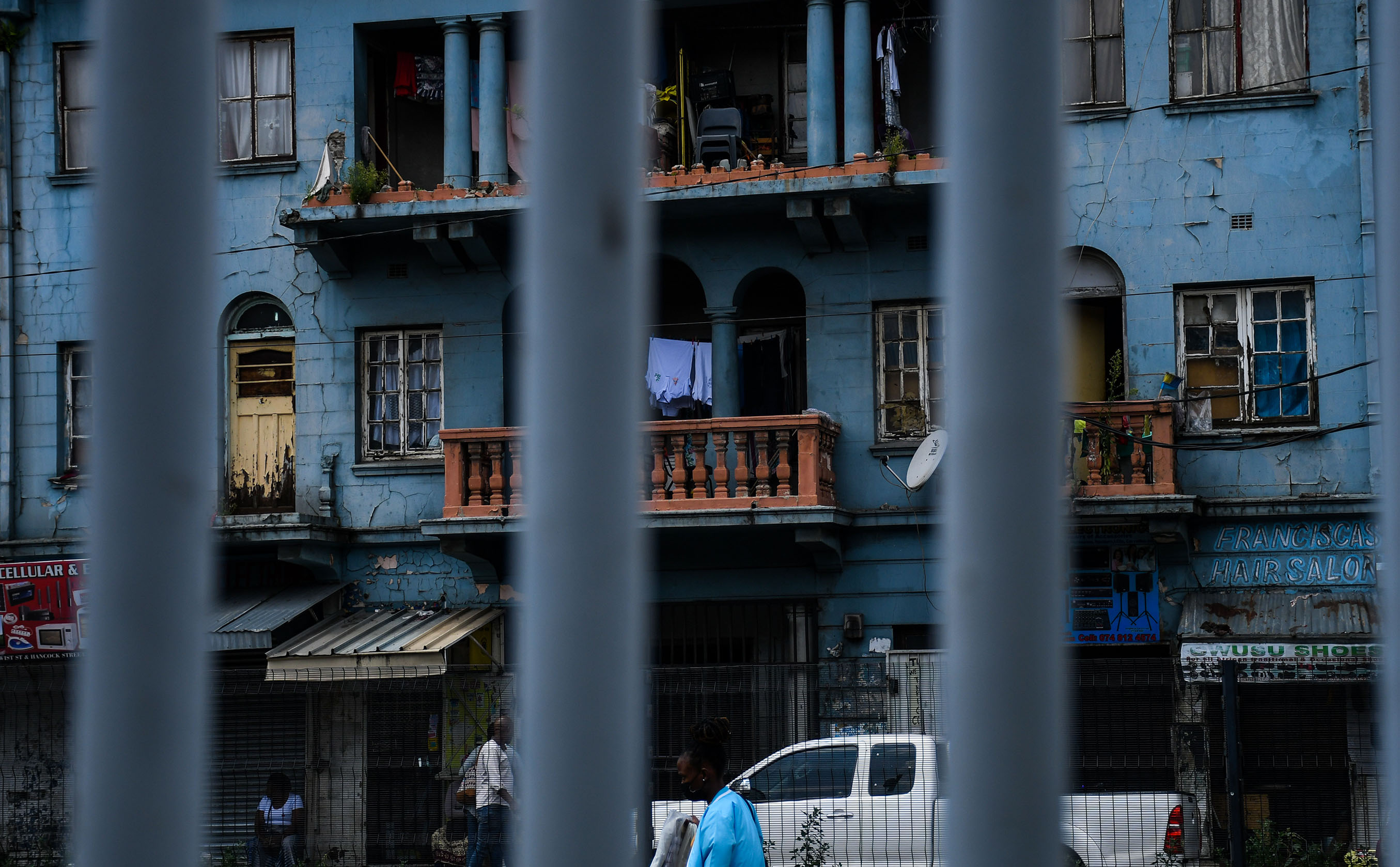
Through the gates of the Johannesburg Art Gallery Hillbrow residents going about their day. (Photo: Julia Evans)
Where do we go from here?
A meeting was held recently with city officials and relevant stakeholders, and heritage architect McKechnie told Daily Maverick: “They’ve identified that the building is in really critical condition and they have to undertake major works to it and to protect the works they need to move them off-site and store them safely and create a satellite gallery.”
However, McKechnie said: “What the City of Joburg says it’s doing and what actually happens is not always the same thing.” DM

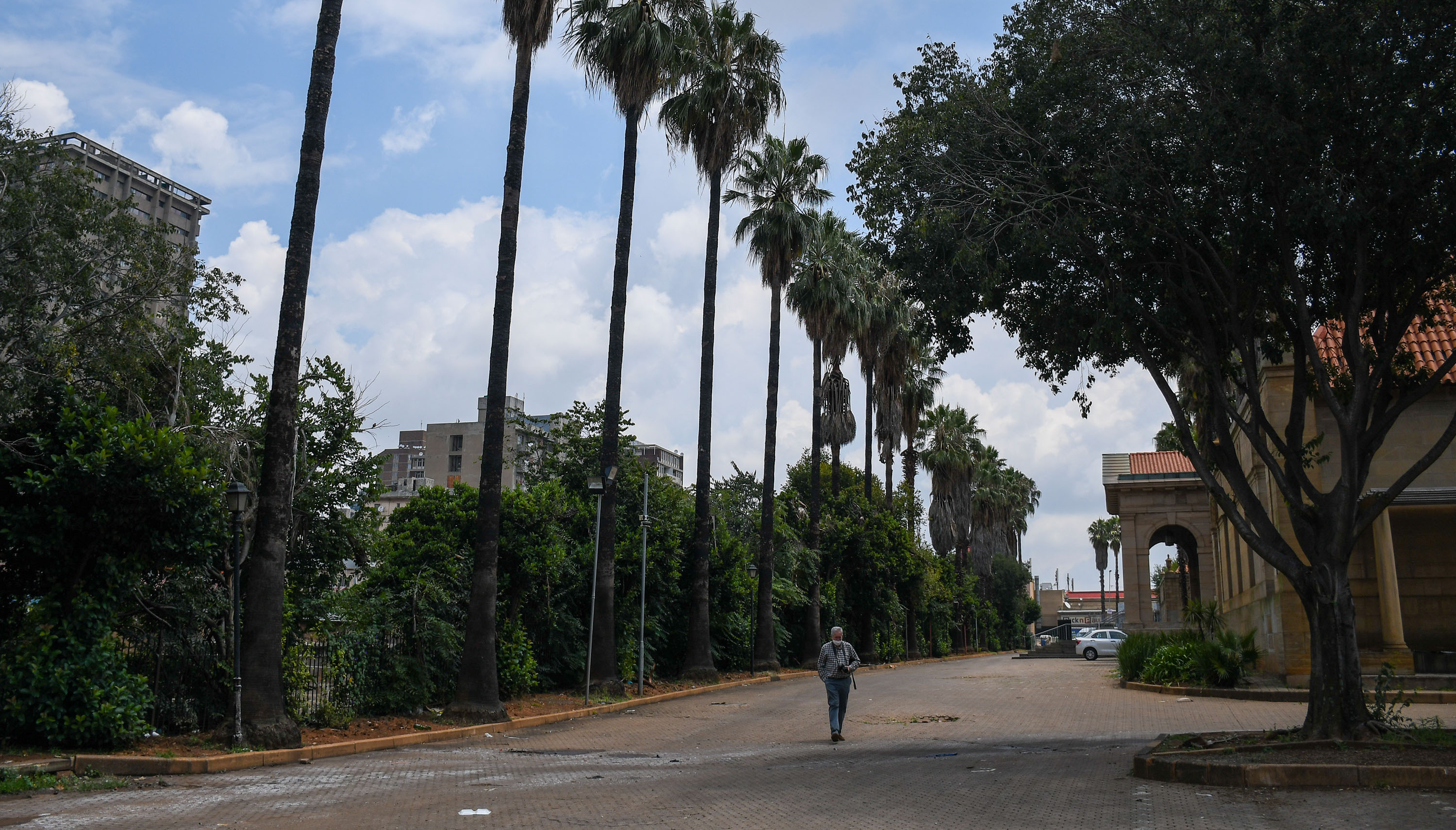
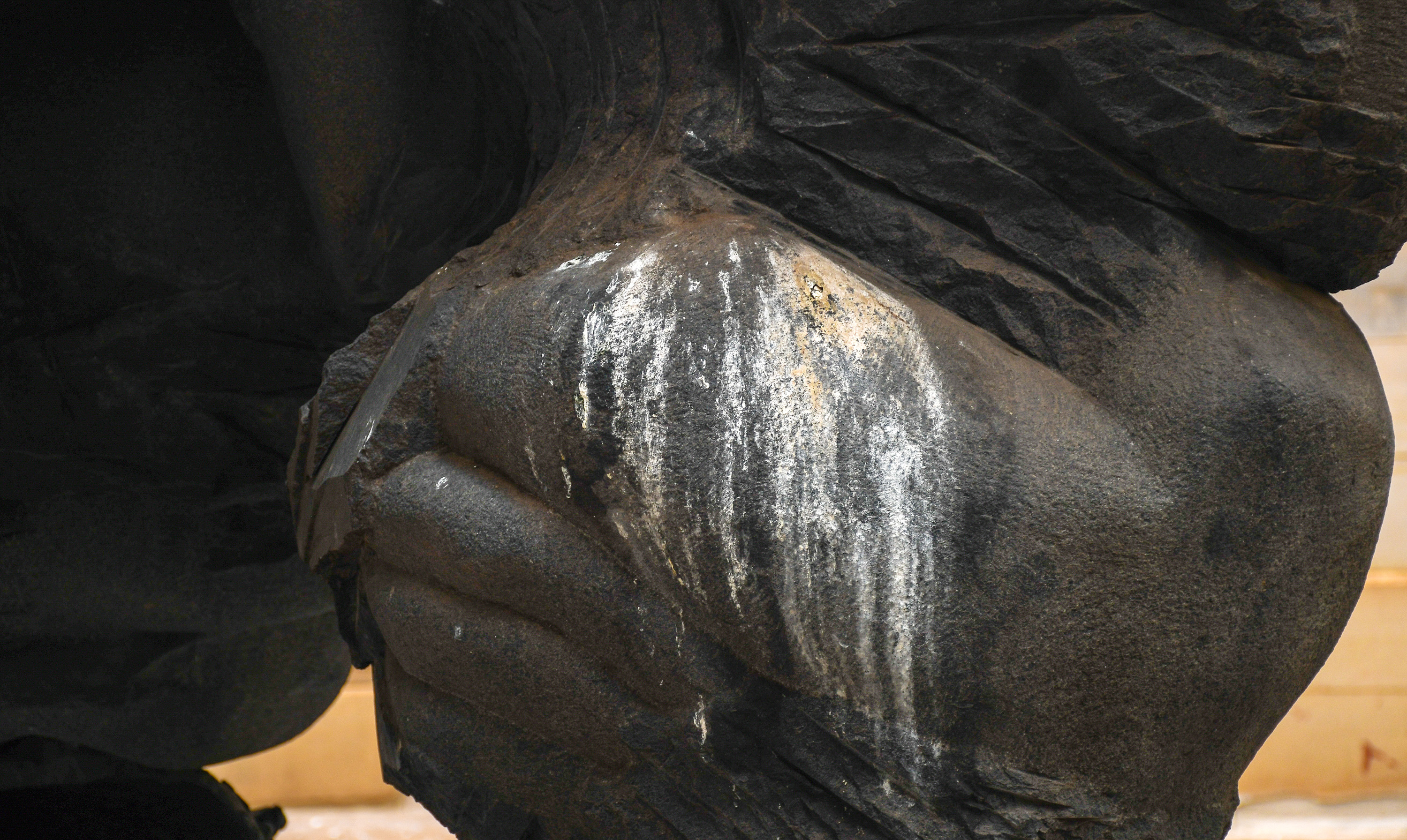
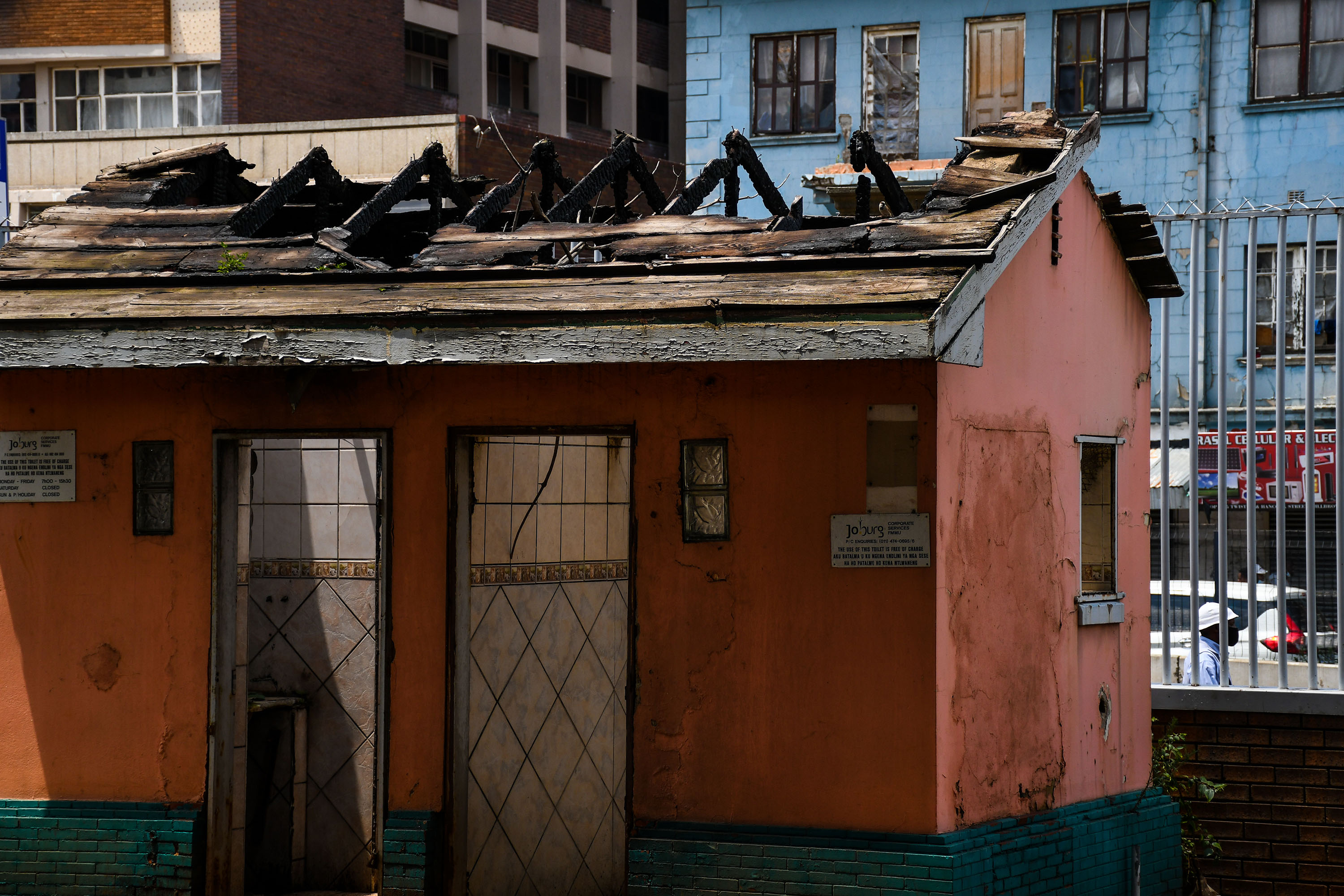
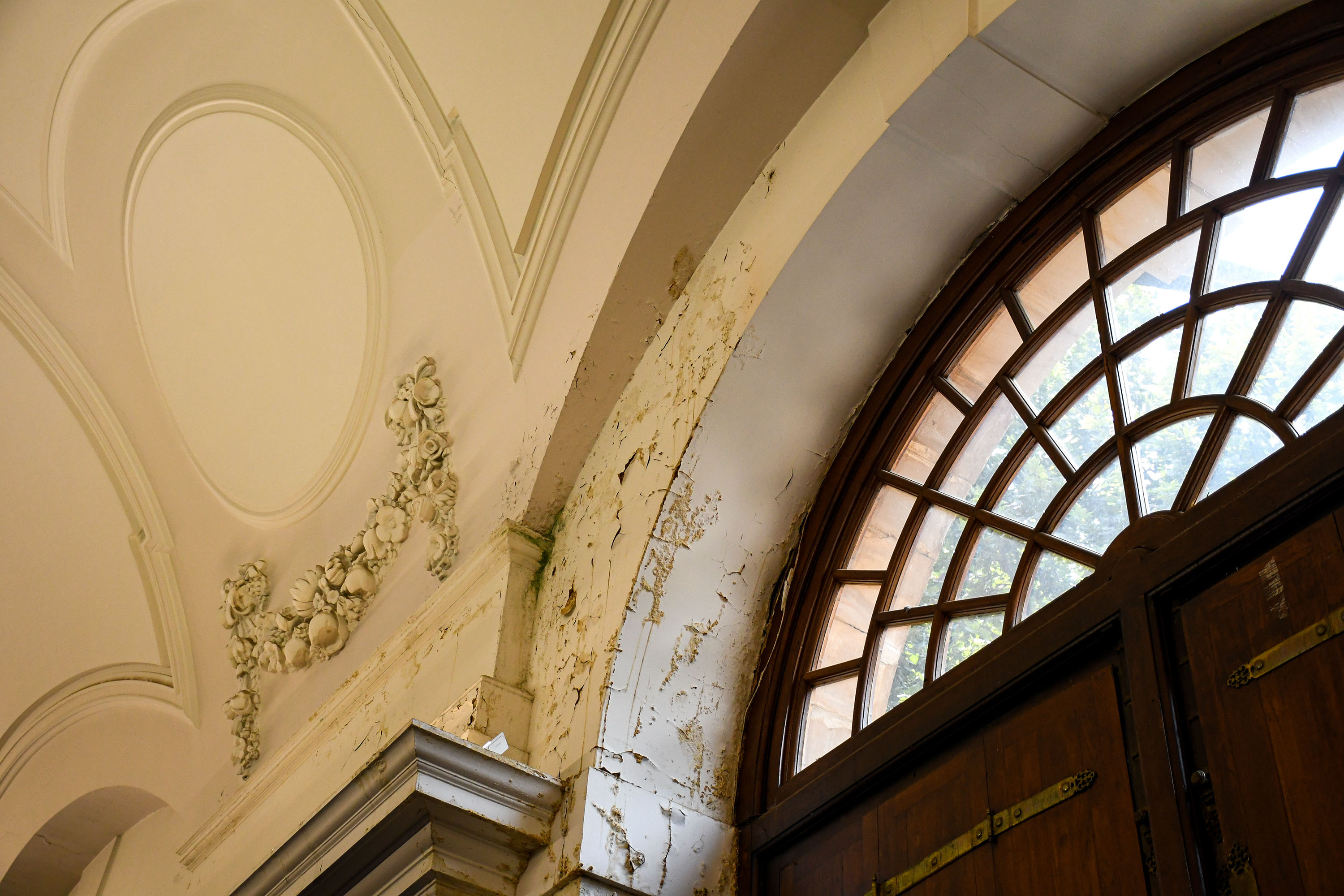

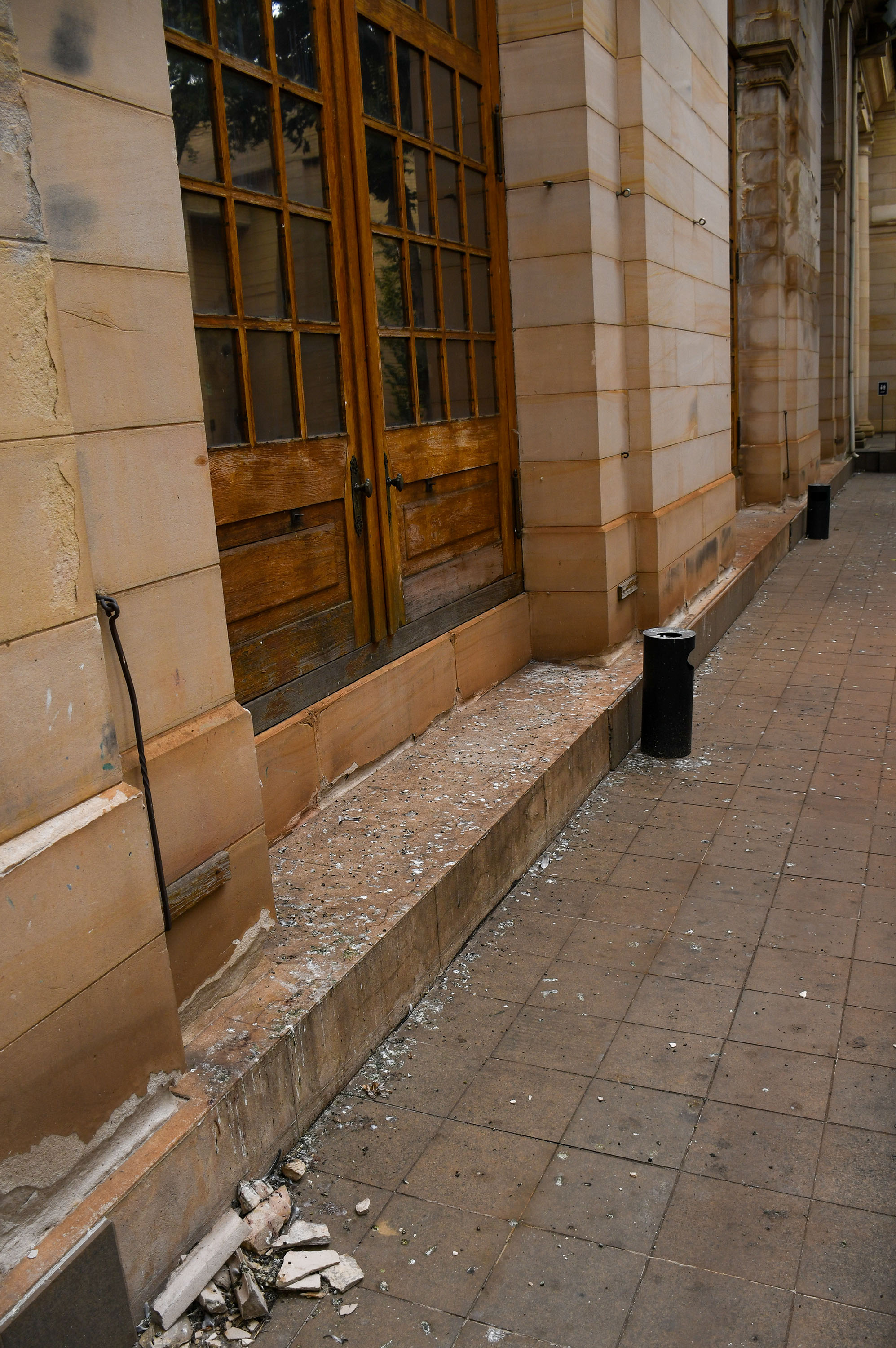














 Become an Insider
Become an Insider
It’s a travesty to see culture and history being erased and just rotting away! Art Galleries and Museums are melting pots where diverse views can tell stories of our past, where we are now and where we might be going.
I recall a visit to JAG with my mom in the late 80’s (I was in my mid teens) where an installation of a corrugated iron shack stood amongst imposing sculptures in the basement. I was simultaneously mesmerised, scared and exhilarated. JAG was a different world, a magical place…
There are two issues and two problems. I have visited the JAG on several occasions, but not since the mid 1990’s – so I, and demographics generally, are part of the problem, part of the significant change in Johannesburg that has seen the “artistic, beating heart of Johannesburg move north to Hyde Park and beyond. Art in its myriad forms, does not feature in the budget spend of the vast majority, so galleries, libraries, the very essence of successful societies, that, in my view, give life meaning, but if merely surviving and staying alive, is all that life throws at you, then that is how it must be.
Cutting out all the fraud, corruption, institutionalised ANC-led, gross theft, would enable both libraries and art galleries to be saved and significant inroads made into the many social needs of broader society. But this is clearly beyond the ken of our new ANC elite. Which brings us back to the two problems.
The first is what to do with the wonderful Lutyens building itself, marooned, as it is, in the most gloomy and depressing area of downtown Jo’burg. The gallery cannot be saved by itself unless the area as a whole, does not undergo a radical uplift, and does our city have the wit, energy, funds and skills to undertake such? So the building itself is hostage to the caprices and abilities of our government to bring about major changes.
The second is the artwork; these need to be re-housed, speedily, in surroundings that can financially sustain an art gallery – Steyn City?
It is all so sad and depressing; the reality is that the once vibrant Johannesburg art, literature and reading society, relied heavily on Jewish support – a community that the World over has always valued and supported the arts. Sadly too few now remain. Many have aged and passed away, but many too have seen the writing on the wall, and moved on to postures nude (to steal from one of my favourite John Lennon sayings) and now enrich other cities, in many other parts of the World beyond our boundaries.
The gallery unfortunately needs to be moved. I would suggest somewhere around Zoo Lake or the Johannesburg Botanical Gardens.
I visited the gallery as a teenager in 1997 for a school project where I attempted to replicate a Monet in oil pastel. Back then the gallery was still neat but the area was already run down.
We do not do heritage very well
This is tragic. I used to visit JAG a lot when I worked for the City of Johannesburg in the 90s, it was a wonderful place to spend a lunch hour. It is unfortunately in the same vein as many, many heritage buildings owned by the state and completely neglected. We are going to lose them.
This is symptomatic of what is likely to happen to all colonial heritage in the country. People who care about it will have to be put in charge because ruin is the inevitable outcome of an uncaring attitude. (It amazes me that the most valuable works have not yet been stolen. Has anyone checked?)
I worked in Braamfontein in the late 1980’s and went to the JHB Art Gallery at least once a week, during lunch time. It was such beautiful space, with ‘good energy’. It always lifted my spirit. So sad to see these pictures.
So sad 😥
Sell the artwork or what us left of it to save the history. JAG is finished.
Tragic, but entirely predictable.
I would love to blame Nathi Mthethwa the honorable minister of condolences, sorry …. Arts, Culture, Science & Technology (and Sport), but to be honest, he is just the last in a line of uncaring arts ministers.
Almost all the visual art museums funded by the state have the same predicament – the uncaring hand of the ANC government which cuts budgets, ignores issues of public interest and makes policy without thinking of consequences, intent on politicking and racialising every aspect of our being. Right now, the honourable Mthethwa is scheming and planning to centralise all the museums in the country under one or two Boards, essentially robbing them of their remit and mandates, appointing no doubt cadres to the Board(s) whose loyalty is not towards the institutions, but the Ministry. To what end?
Museums are repositories of a nation’s history and identity, places of learning and experience, institutions where the conditions and issues facing us as a nation should be presented and debated – they are the engine rooms of our National imaginary. That they are not is an indictment of our government, but most importantly, reveals to us that it does not believe in a South African nation. At least, not a diverse one. The concept of a National imaginary holds no water, as the neglect of visual art museums, physically and intellectually, clearly shows us.
We could reverse this process by “occupying” museums. The JAG could be the first, and easier to change because it’s funding (and control) is municipal.
All the weeping and wailing that we are entitled to do will make not an iota of difference. I recall (with some horror) the surprised question from an SABC morning show host, when a listener called in to mourn the loss of valuable paintings at UCT. She said, in genuine surprise, “Why does it matter, they’re from colonial times?” I suspect many ANC ‘cadres’ rejoice and their ignorance and pleasure are both, sadly, comprehensible. Two countries indeed.
Shocking!!
The paintings that are mentioned are priceless – one would normally have to go to Paris, London or New York to see the likes of Picasso, Renoir and Rembrandt. What are they thinking? And are those works of art still there?